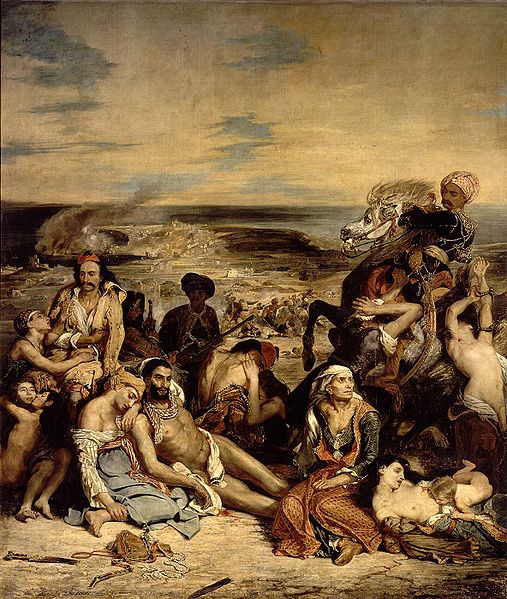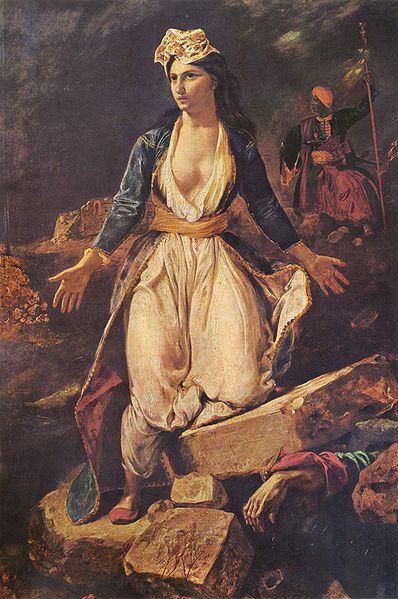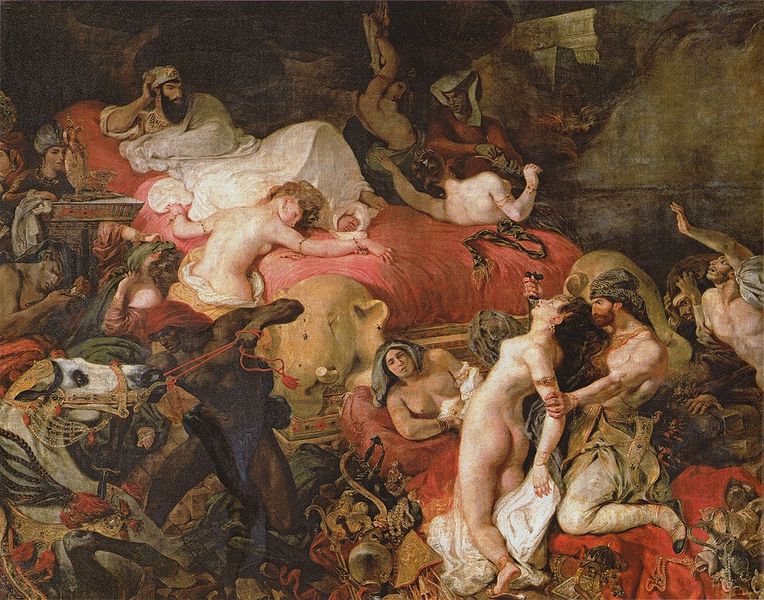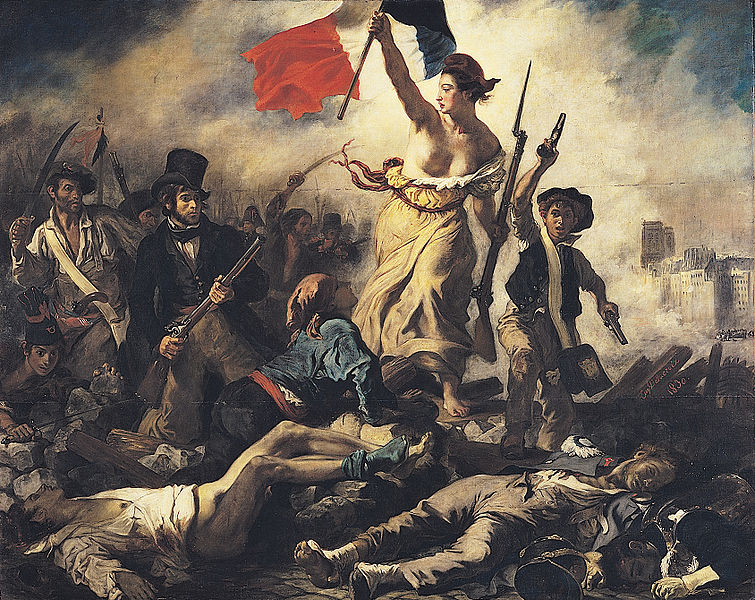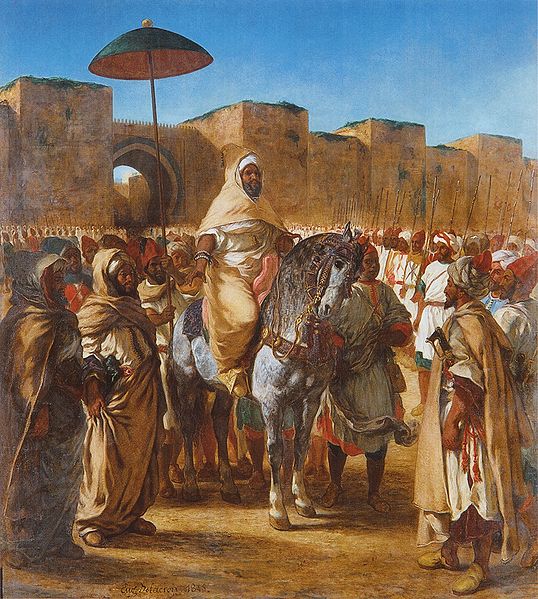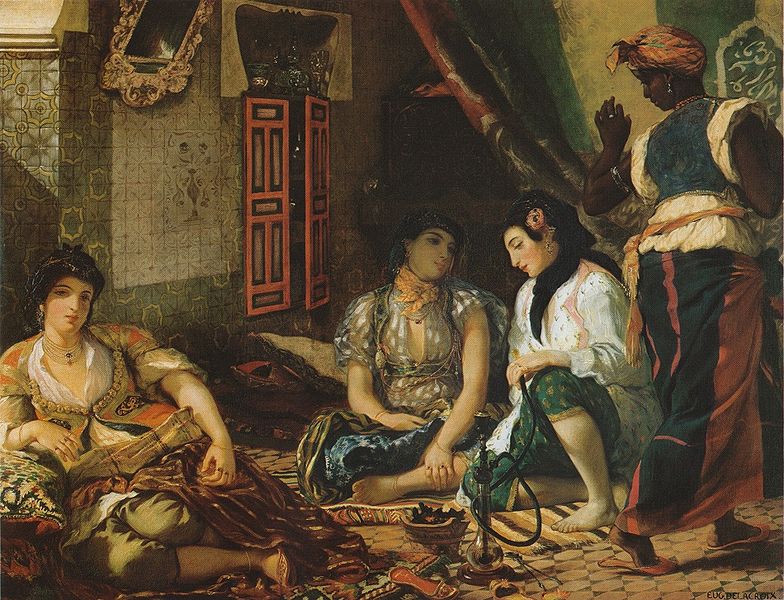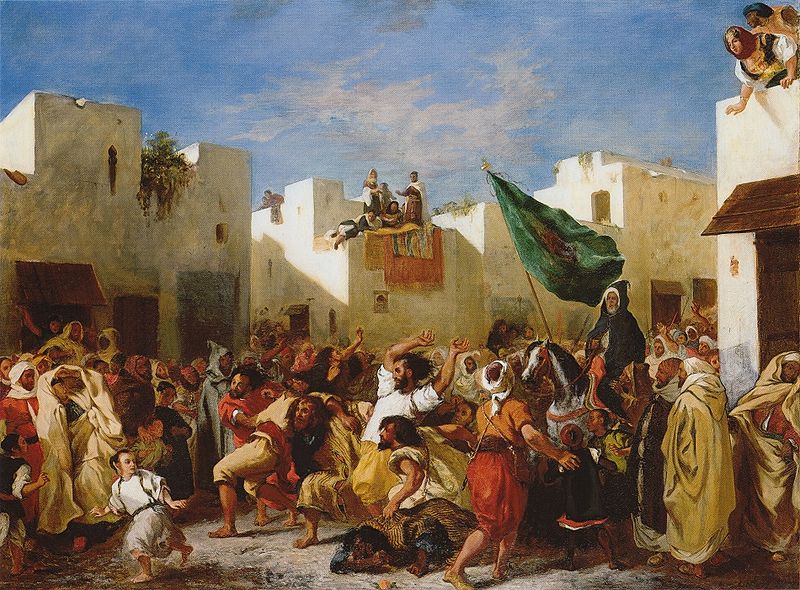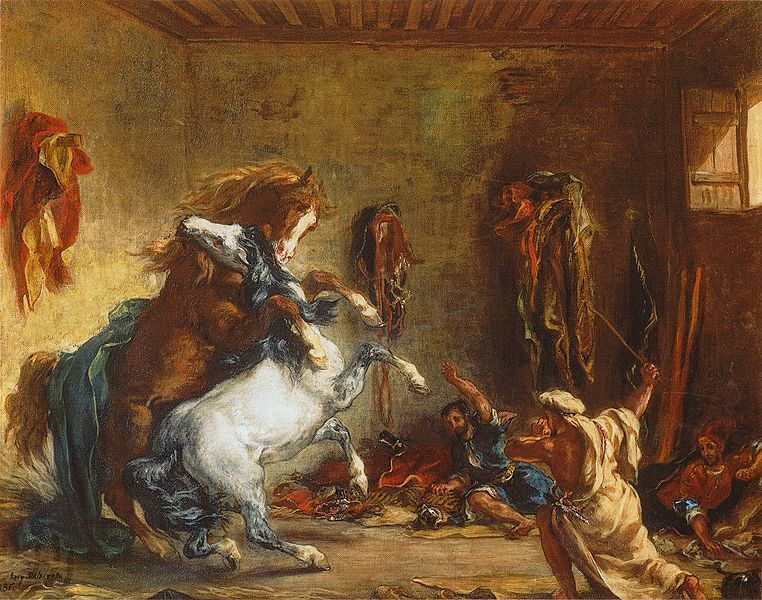<Back to Index>
- Philosopher Ludwig Josef Johann Wittgenstein, 1889
- Painter Eugène Delacroix, 1798
- Emperor of the Roman Empire Marcus Aurelius Antoninus Augustus, 121
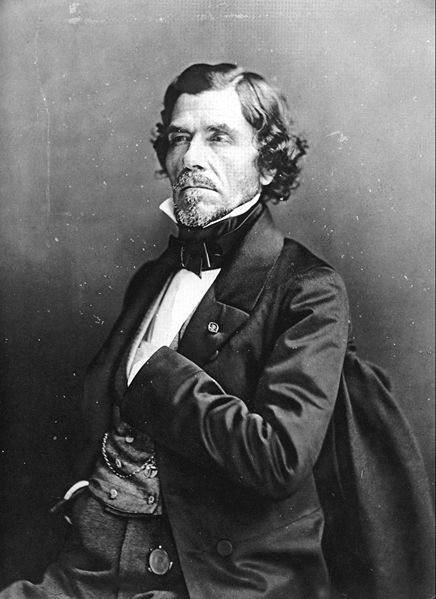
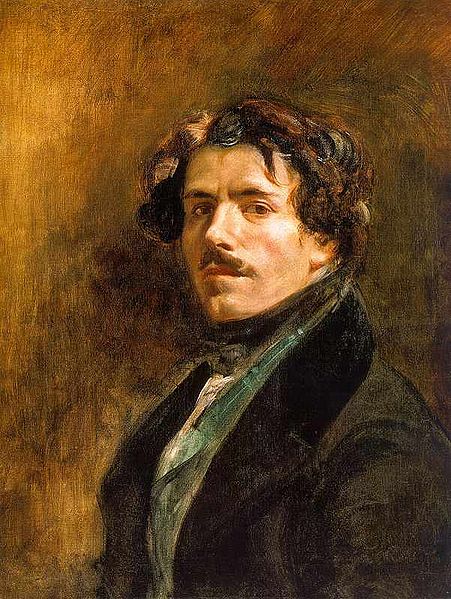
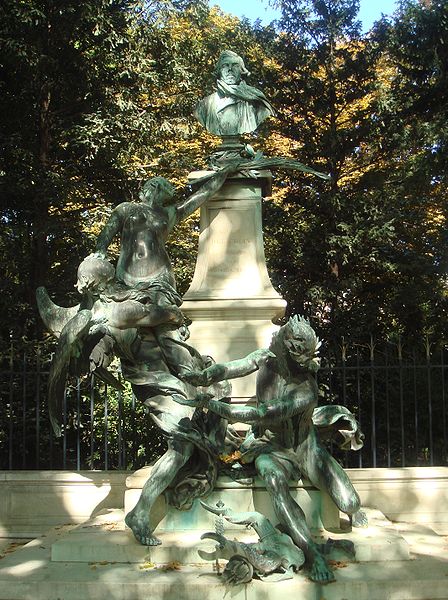
Ferdinand Victor Eugène Delacroix (26 April 1798 – 13 August 1863) was a French Romantic artist regarded from the outset of his career as the leader of the French Romantic school. Delacroix's use of expressive brushstrokes and his study of the optical effects of colour profoundly shaped the work of the Impressionists, while his passion for the exotic inspired the artists of the Symbolist movement. A fine lithographer, Delacroix illustrated various works of William Shakespeare, the Scottish writer Sir Walter Scott and the German writer Johann Wolfgang von Goethe.
In contrast to the Neoclassical perfectionism of his chief rival Ingres, Delacroix took for his inspiration the art of Rubens and painters of the Venetian Renaissance,
with an attendant emphasis on color and movement rather than clarity of
outline and carefully modeled form. Dramatic and romantic content
characterized the central themes of his maturity, and led him not to
the classical models of Greek and Roman art, but to travel in North
Africa, in search of the exotic. Friend and spiritual heir to Théodore Géricault, Delacroix was also inspired by Byron, with whom he shared a strong identification with the "forces of the sublime", of nature in often violent action. However,
Delacroix was given neither to sentimentality nor bombast, and his
Romanticism was that of an individualist. Delacroix was born at Charenton (Saint-Maurice, Val-de-Marne), in Île-de-France near Paris. There is reason to believe that his father, Charles-François Delacroix, was infertile at the time of Eugène's conception and that his real father was Talleyrand,
who was a friend of the family and successor of C. Delacroix as
minister of the foreign affairs, and whom the adult Eugène
resembled in appearance and character. Throughout his career as a painter, he was protected by Talleyrand, who served successively the Restoration and king Louis-Philippe, and ultimately as ambassador of France in Great Britain, and later by Talleyrand's grandson, Charles Auguste Louis Joseph, duc de Morny, half-brother of Napoleon III and speaker of the French house of commons. His early education was at the Lycée Louis-le-Grand, where he steeped himself in the classics and won awards for drawing. In 1815 he began his training with Pierre-Narcisse Guérin in the neoclassical style of Jacques-Louis David. An early church commission, The Virgin of the Harvest, (1819), displays a Raphaelesque influence, but another such commission, The Virgin of the Sacred Heart, (1821), evidences a freer interpretation. It precedes the influence of the more colorful and rich style of the Flemish painter Peter Paul Rubens (1577-1640), and fellow French artist Théodore Géricault (1791-1824), whose works marked an introduction to Romanticism in art. The impact of Géricault's The Raft of the Medusa was profound, and stimulated Delacroix to produce his first major painting, The Barque of Dante, which was accepted by the Paris Salon in
1822. The work caused a sensation, and was largely derided by the
public and officialdom, yet was purchased by the State for the
Luxembourg Galleries; the pattern of widespread opposition to his work,
countered by a vigorous, enlightened support, would continue throughout
his life. Two years later he again achieved popular success for his The Massacre at Chios.
Delacroix's painting of the massacre at Chios shows sick, dying Greek civilians about to be slaughtered by the Turks. One of several paintings he made of this contemporary event, it expresses sympathy for the Greek cause in their war of independence against
the Turks, a popular sentiment at the time for the French people.
Delacroix was quickly recognized as a leading painter in the new
Romantic style, and the picture was bought by the state. His depiction
of suffering was controversial however, as there was no glorious event
taking place, no patriots raising their swords in valour as in David's Oath of the Horatii, only a disaster. Many critics deplored the painting's despairing tone; the artist Antoine-Jean Gros called it "a massacre of art". The
pathos in the depiction of an infant clutching its dead mother's breast
had an especially powerful effect, although this detail was condemned
as unfit for art by Delacroix's critics. A viewing of the paintings of John Constable and
the watercolour sketches and art of Richard Parkes Bonnington prompted
Delacroix to make extensive, freely painted changes to the sky and
distant landscape.
Delacroix
produced a second painting in support of the Greeks in their war for
independence, this time referring to the capture of Messolonghi by Turkish forces in 1825. With a restraint of palette appropriate to the allegory, Greece Expiring on the Ruins of Messolonghi displays
a woman in Greek costume with her breast bared, arms half-raised in an
imploring gesture before the horrible scene: the suicide of the Greeks,
who chose to kill themselves and destroy their city rather than
surrender to the Turks. A hand is seen at the bottom, the body having
being crushed by rubble. The whole picture serves as a monument to the
people of Messolonghi and to the idea of freedom against tyrannical
rule. This event interested Delacroix not only for his sympathies with
the Greeks, but also because the poet Byron, whom Delacroix greatly admired, had died there. A trip to England in 1825 included visits to Thomas Lawrence and Richard Parkes Bonington, and the color and handling of English painting provided impetus for his only full-length portrait, the elegant Portrait of Louis-Auguste Schwiter, (1826-30). At
roughly the same time, Delacroix was creating romantic works of
numerous themes, many of which would continue to interest him for over
thirty years. By 1825 he was producing lithographs illustrating
Shakespeare, and soon thereafter lithographs and paintings from Goethe's Faust. Paintings such as The Combat of the Giaour and Hassan, (1826), and Woman with Parrot,
(1827), introduced subjects of violence and sensuality which would
prove to be recurrent. These various romantic strands came together in
the Death of Sardanapalus, (1827-8). Delacroix's painting of the death of the Assyrian king Sardanapalus shows an emotionally stirring scene alive with beautiful colours, exotic costumes and tragic events. The Death of Sardanapalus depicts
the besieged king watching impassively as guards carry out his orders
to kill his servants, concubines and animals. The literary source is a
play by Byron, although the play does not specifically mention any
massacre of concubines. Sardanapalus' attitude of calm detachment is a familiar pose in Romantic imagery
in this period in Europe. The painting, which was not exhibited again
for many years afterward, has been regarded by some critics as a
gruesome fantasy involving death and lust. Especially shocking is the
struggle of a nude woman whose throat is about to be cut, a scene
placed prominently in the foreground for maximum impact. However, the
sensuous beauty and exotic colours of the composition make the picture
appear pleasing and shocking at the same time. A variety of Romantic interests were again synthesized in The Murder of the Bishop of Liège, (1829). It also borrowed from a literary source, this time Scott, and depicts a scene from the Middle Ages, that of the murder of Louis de Bourbon, Bishop of Liège, amidst an orgy sponsored by his captor, William de la Marck. Set in an immense vaulted interior which Delacroix based on sketches of the Palais de Justice in Rouen and Westminster Hall,
the drama plays out in chiaroscuro, organized around a brilliantly lit
stretch of tablecloth. In 1855 a critic described the painting's
vibrant handling as "Less finished than a painting, more finished than
a sketch, The Murder of the Bishop of Liège was left by the painter at that supreme moment when one more stroke of the brush would have ruined everything". Delacroix's most influential work came in 1830 with the painting Liberty Leading the People,
which for choice of subject and technique highlights the differences
between the romantic approach and the neoclassical style. Probably
Delacroix's best known painting, it is an unforgettable image of
Parisians, having taken up arms, marching forward under the banner of
the tricolore representing
liberty, equality, and fraternity; Delacroix was inspired by
contemporary events to invoke the romantic image of the spirit of
liberty. The soldiers lying dead in the foreground offer poignant
counterpoint to the symbolic female figure, who is illuminated
triumphantly, as if in a spotlight. The
French government bought the painting but officials deemed its
glorification of liberty too inflammatory and removed it from public
view. Nonetheless, Delacroix still received many government commissions
for murals and ceiling paintings. He seems to have been trying to
represent the spirit and the character of the people, rather than glorify the actual event, a revolution against King Charles X which did little other than bring in a different king, Louis-Philippe, to power. Following the Revolution of 1848 that saw the end of the reign of King Louis Philippe, Delacroix' painting, Liberty Leading the People, was finally put on display by the newly elected President, Louis Napoleon (Napoleon III.) Today, it is visible in the Louvre museum. The boy holding a gun up on the right is sometimes thought to be an inspiration of the Gavroche character in Victor Hugo's 1862 novel, Les Misérables. In 1832, Delacroix traveled to Spain and North Africa, as part of a diplomatic mission to Morocco shortly after the French conquered Algeria. He went not primarily to study art, but to escape from the civilization of Paris, in hopes of seeing a more primitive culture. He
eventually produced over 100 paintings and drawings of scenes from or
based on the life of the people of North Africa, and added a new and
personal chapter to the interest in Orientalism. Delacroix
was entranced by the people and the costumes, and the trip would inform
the subject matter of a great many of his future paintings. He believed
that the North Africans, in their attire and their attitudes, provided
a visual equivalent to the people of Classical Rome and Greece. He managed to sketch some women secretly in Algiers, as in the painting Women of Algiers in their Apartment (1834),
but generally he encountered difficulty in finding Moslem women to pose
for him because of Muslim rules requiring that women be covered. Less
problematical was the painting of Jewish women in North Africa, as subjects for the Jewish Wedding in Morocco (1837-41). While in Tangier, he made many sketches of the people and the city, subjects to which he would return until the end of his life. Animals—the embodiment of romantic passion—were incorporated into paintings such as Arab Horses Fighting in a Stable (1860), The Lion Hunt (of which there exist many versions, painted between 1856 and 1861), and Arab Saddling his Horse (1855).
In 1838 Delacroix exhibited Medea about to Kill Her Children, which created a sensation at the Salon. His first large-scale treatment of a scene from Greek mythology, the painting depicts Medea clutching her children, dagger drawn to slay them in vengeance for her abandonment by Jason.
The three nude figures form an animated pyramid, bathed in a raking
light which penetrates the grotto in which Medea has hidden. Though the
painting was quickly purchased by the State, Delacroix was disappointed
when it was sent to the Lille Musée des Beaux-Arts; he had intended for it to hang at the Luxembourg, where it would have joined The Barque of Dante and Scenes from the Massacres of Chios. From
1833 Delacroix received numerous commissions to decorate public
buildings in Paris. In that year he began work for the Salon du Roi in
the Chambre des Députés, Palais Bourbon, which was not
completed until 1837. For the next ten years he painted in both the
Library at the Palais Bourbon and the Library at the Palais du
Luxembourg. In 1843 he decorated the Church of St. Denis du Saint
Sacrement with a large Pietà, and from 1848 to 1850 he painted the ceiling in the Galerie d'Apollon of the Louvre.
From 1857 to 1861 he worked in the Chapelle des Agnes at St. Sulpice.
These commissions offered him the opportunity to compose on a large
scale in an architectural setting, much as had those masters he admired, Paolo Veronese, Tintoretto, and Rubens. The
work was fatiguing, and during these years he suffered from an
increasingly fragile constitution. In addition to his home in Paris,
from 1844 he also lived at a small cottage in Champrosay,
where he found respite in the countryside. From 1834 until his death,
he was faithfully cared for by his housekeeper, Jeanne-Marie le
Guillou, who zealously guarded his privacy, and whose devotion
prolonged his life and his ability to continue working in his later
years. In 1862 Delacroix participated in the creation of the Société Nationale des Beaux-Arts. His friend, the writer Théophile Gautier,
became chairman, with the painter Aimé Millet acting as deputy
chairman. In addition to Delacroix, the committee was composed of the
painters Carrier-Belleuse and Puvis de Chavannes. Among the exhibitors were Léon Bonnat, Jean-Baptiste Carpeaux, Charles-François Daubigny, Gustave Doré, and Édouard Manet.
Just after his death in 1863, the society organized a retrospective
exhibition of 248 paintings and lithographs by Delacroix—and ceased to
mount any further exhibitions. Eugène Delacroix died in Paris, France and was buried there in the Père Lachaise Cemetery. His house, formerly situated along the canal of the Marne, is now near the exit of the motorway leading from Paris to central Germany
